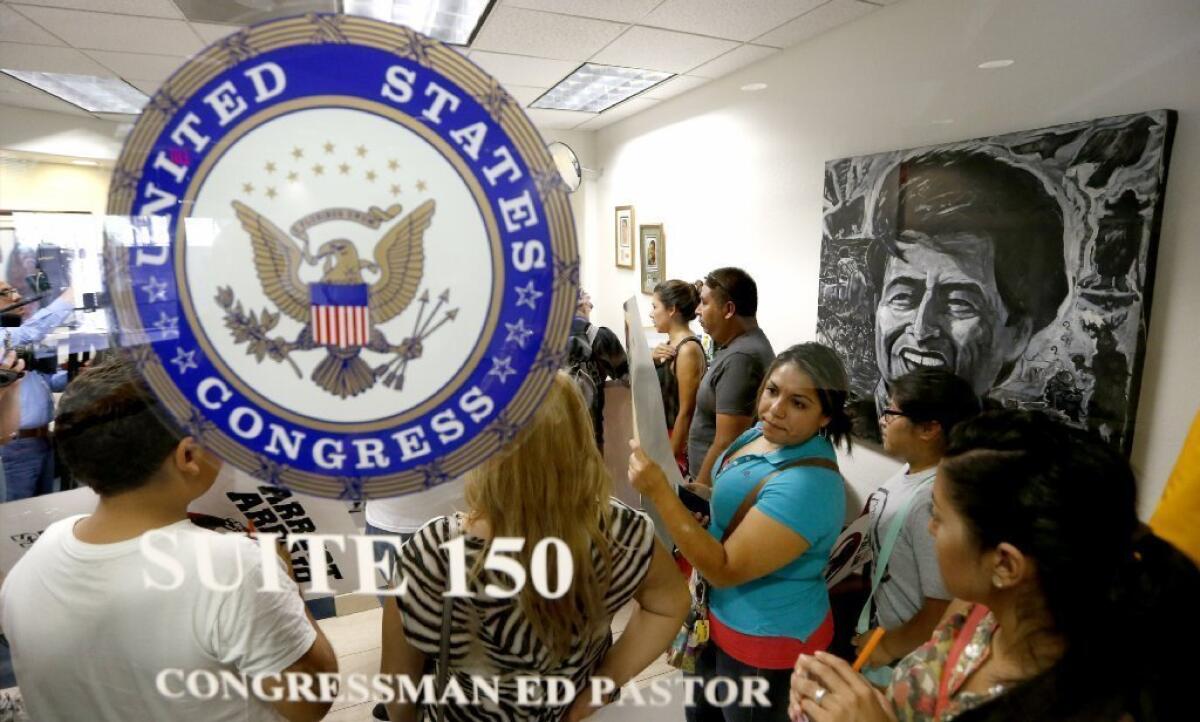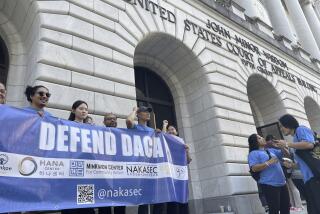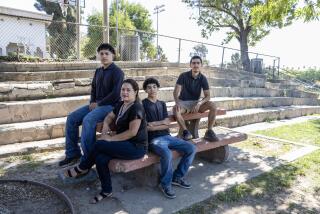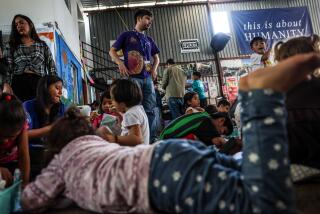Most of ‘Dream 9’ asylum applications move forward

TUCSON -- Most of the “Dream 9” will get the chance to argue their case for asylum before an immigration judge, their attorney says.
The five women and four men, who were brought to the U.S. illegally as children, staged a brazen protest three weeks ago at the U.S.-Mexico border to draw attention to the thousands of people deported under the Obama administration. When the so-called Dreamers – named for the Dream Act, which would provide them with a path to legalization -- attempted to reenter the U.S. at the Nogales, Ariz., port of entry on July 22, they were arrested. They have been in federal custody ever since.
Federal officials notified their attorney, Margo Cowan, on Monday that that seven of the nine could pursue their petitions for asylum.
Immigration asylum officers found that the seven had credible fear of persecution or torture in their birth country and could therefore not be immediately removed, Cowan said. Now their cases go to an immigration judge who will decide whether to grant asylum.
“It’s a huge victory,” said Mohammad Abdollahi, organizer with the National Immigrant Youth Alliance, who helped organize the protest. “The goal is to get them back with their families.”
As of Monday evening, officials had yet to determine whether the last two in the group—Lizbeth Mateo, 29, of Los Angeles, and Marco Saavedra, 23, of New York—also could get asylum hearings, Cowan said. A decision is likely come Tuesday, she added.
It’s unclear whether the nine would be released on parole to their American communities with a notice to appear in court, or held in detention until their hearing.
Citizenship and Immigration Services officials said they could not comment on the cases.
“Asylum applications are confidential under immigration law, and we may not discuss information regarding whether an individual has or has not filed an application,” agency spokeswoman Maria Elena Upson said in a prepared statement.
The development comes a day before President Obama visits Phoenix to speak on the economy and the housing industry. Young immigrant rights activists are expected to protest his arrival to chastise him for deporting thousands of people, Abdollahi said.
The case of the “Dream 9” began in July when Saavedra, Mateo and another young adult who was also brought into the U.S. illegally — Lulu Martinez, 24, of Chicago— voluntarily flew across the border to Mexico as a protest of the administration’s deportation policies. On July 22, they tried to reenter the U.S. with six other Dreamers.
The other six also were brought to this country illegally as children but had returned to Mexico more than a year ago for various reasons. Most returned before the Obama administration offered immigration relief to childhood arrivals, allowing such people who are in the country illegally to file for deferred deportation and stay in the U.S., at least temporarily.
Abdollahi said the aim of the Nogales protest wasn’t just to provide immigration relief to the Dream 9. The activists also want to test Obama’s allegiance to a promise his administration made: that immigration officials would focus on deporting convicted criminals and those who pose a threat to national security or public safety, not those without a criminal record who are living in the country illegally.
In 2011, Obama administration officials announced that immigration officials would use their discretion before deporting people who are in the country illegally, giving people who face deportation the opportunity to stay and apply for a work permit.
Since then, however, immigrant-rights activists have blasted the administration, contending that they’ve removed many people who are similar to the “Dream 9”—people who are in the country illegally but have no criminal background.
If members of the Dream 9 are granted asylum, it could set a precedent for others in similar situations, potentially opening up the opportunity for Mexican nationals to seek asylum under similar claims, Abdollahi said.
Comparatively few Mexican nationals have been granted asylum, although applications have increased quickly as drug violence skyrockets in some parts of Mexico.
If all nine are ultimately released with an order to appear in immigration court, Abdollahi said it could be years before they can make their case before an immigration judge. If they remain in detention, however, their hearings would be sooner.
cindy.carcamo@latimes.com
ALSO:
Beauty queen accused of being bomb maker
University of Iowa named top party school in survey
House members want California egg measure out of farm bill
Follow L.A. Times National on Twitter
More to Read
Sign up for Essential California
The most important California stories and recommendations in your inbox every morning.
You may occasionally receive promotional content from the Los Angeles Times.











